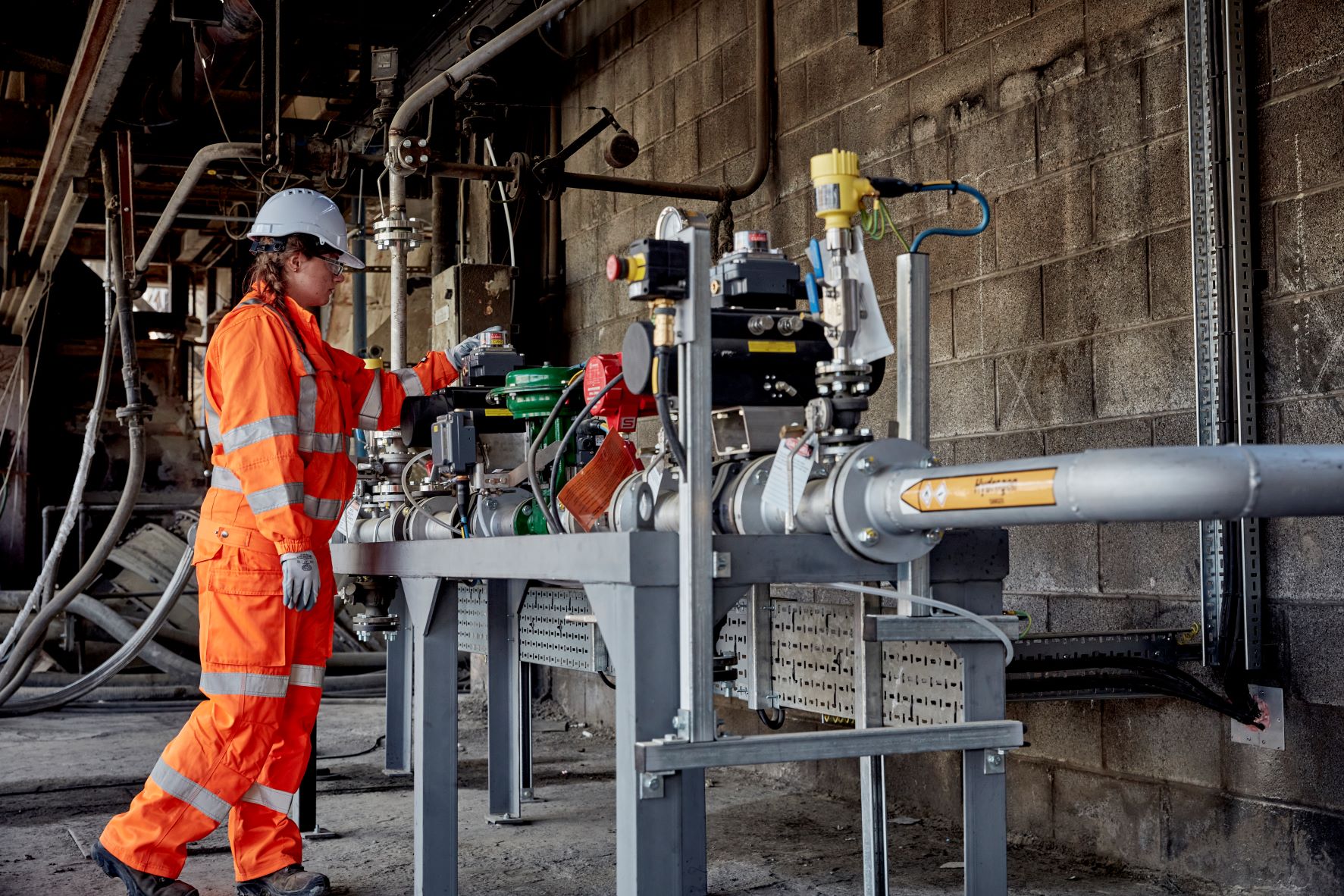This demonstration was funded by the UK Government Department for Business, Energy and Industrial Strategy. It aimed to test a net zero fuel mix of biomass, hydrogen and plasma for cement production. Two sites were chosen to undertake the physical trials:
- Hanson Cement: Ribblesdale site: trialing hydrogen and biomass in the main kiln burner
- Tarmac Cement: Tunstead site: trialing plasma and biomass in the calciner
Hydrogen/biomass trial

The biomass sources chosen were meat and bone meal (MBM, a solid fuel derived from abattoir and rendering waste) and glycerine (a by-product of the biodiesel production process). The trial took place on 4 separate days across a month. On each trial day, hydrogen/biomass was ramped up and coal ramped down until the net zero fuel mix was achieved. At the point of net zero, the thermal input from hydrogen was 40% of the total energy required by the main kiln burner, and the remaining 60% came from biomass.
The use of hydrogen was highly successful with no obvious impact on clinker or cement quality. However, the cost was very high. A calculation of the Cost of CO2 Avoided found it to be 1559 €/tCO2 at current hydrogen cost levels. The deployment of hydrogen at scale across the sector is very much tied to UK plans for increasing cost competitive hydrogen production and scaling up the infrastructure to enable its delivery.
If a net zero fuel mix of hydrogen and biomass were deployed in the main kiln burner across the UK sector, this would reduce annual CO2 emissions by around 875ktCO2 (based on 2019 levels of production). This represents a reduction of 13% of total CO2 emissions (fuel and process emissions) across the sector.
Plasma/ biomass trial
The plasma/biomass part of the demonstration had to be scaled back due to the lack of availability of 1MW plasma torches within the budget set for the project. Instead, a 100kW torch was inserted in the calciner to test whether the torch could withstand the calciner environment. Unfortunately, the plasma torch failed after only 30 minutes but no evidence of damage to the ‘head’ of the plasma torch was observed. The high efficiency of plasma to generate heat makes it worth investigating further in future.
Summary
The key remaining barriers to deployment of a net zero fuel mix following this demonstration are:
- Hydrogen: obtaining a secure supply of cost competitive zero carbon hydrogen. Optimising the net zero carbon fuel mix to use the minimum amount of hydrogen necessary to fire large proportions of waste biomass
- Plasma: development of plasma technology to be of sufficient power and energy and further testing in the cement manufacturing environment
- Biomass: increasing the use of biomass by obtaining a secure supply of waste biomass and testing the use of 100% biomass fuel in the calciner